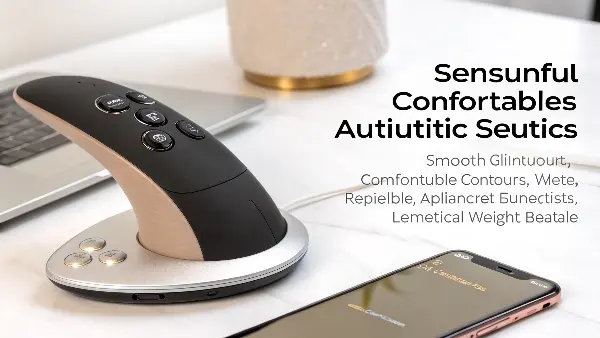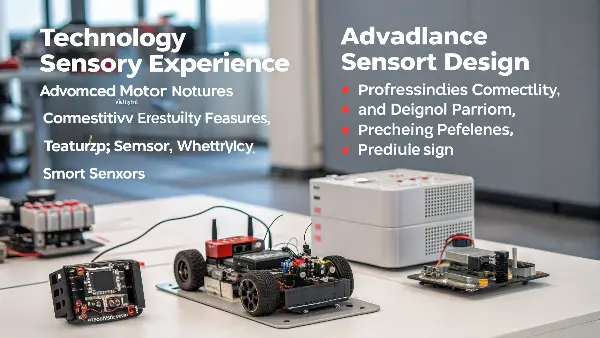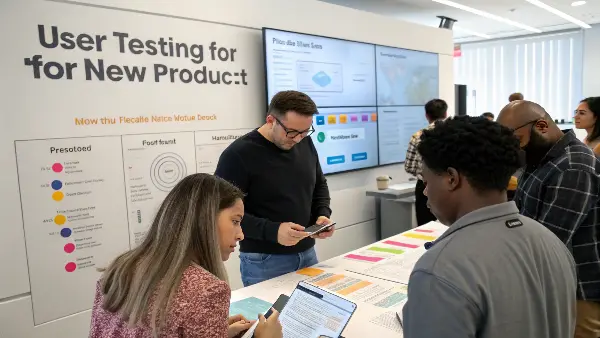Designing adult products that are both safe and appealing worldwide seems challenging, right? Get it wrong, and you risk safety issues, poor sales, or cultural mismatches, harming your brand.
We design safe, sensual products globally by prioritizing body-safe materials, ergonomic design focused on comfort and pleasure, understanding diverse market preferences, rigorous testing, and adhering to international compliance standards throughout the process.
Creating intimate products for a diverse global audience isn’t just about manufacturing; it’s about thoughtful design from the very beginning. As the founder of PrivyPlay, I’ve learned that success hinges on deeply understanding both the technical safety requirements and the nuanced desires of users across different regions. It requires a blend of engineering precision, artistic sensibility, and cultural awareness. Our partners trust us to deliver products that resonate with their customers, whether they’re in the US, Europe, or Australia, and that trust starts with our design philosophy. Let’s explore how we approach this multifaceted challenge.
How Do We Guarantee Materials Are Truly Body-Safe for Every Market?
Worried that materials used in your products might not meet safety standards everywhere? Using non-compliant or unsafe materials leads to health risks, legal issues, and irreparable damage to your brand reputation globally.
We guarantee body-safe materials by strictly using medical-grade silicone and certified ABS plastic, sourced from vetted suppliers, and ensuring compliance with international standards like CE, RoHS, and REACH through rigorous testing.
!
Material safety is the absolute cornerstone of responsible adult product design. It’s non-negotiable. When designing for a global market, you have to consider a patchwork of regulations. [Personal anecdote about navigating the complexities of REACH compliance for European partners early on, highlighting the learning curve and commitment]. Our approach starts with selecting inherently safe materials and verifying their compliance rigorously. This protects the end-user and ensures your brand can confidently sell across borders.
Dive Deeper: Ensuring Material Safety and Global Compliance
Selecting and verifying materials involves several critical steps:
- Prioritizing Medical-Grade Silicone: For any part designed for internal or external body contact, we default to high-quality, medical-grade silicone. Its advantages are crucial:
- Biocompatibility: Proven safe for prolonged skin contact, non-toxic, and hypoallergenic.
- Non-Porous: Resists bacteria buildup, making it hygienic and easy to clean.
- Durability: Withstands repeated use and cleaning without degrading.
We ensure the specific grade meets relevant standards (like USP Class VI or equivalent testing).
- Safe Accompanying Materials (ABS Plastic): For handles, casings, or internal structures, we typically use Acrylonitrile Butadiene Styrene (ABS) plastic. We ensure it’s body-safe grade, meaning it’s free from harmful substances like phthalates and BPA, and durable enough for the product’s intended use.
- Navigating International Standards (CE, RoHS, REACH, FDA Considerations): Compliance is key for market access.
- CE Marking: Indicates conformity with health, safety, and environmental protection standards for products sold within the European Economic Area (EEA).
- RoHS (Restriction of Hazardous Substances): Restricts the use of specific hazardous materials found in electrical and electronic products (relevant for vibrators). We ensure compliance for relevant markets.
- REACH (Registration, Evaluation, Authorisation and Restriction of Chemicals): A European regulation addressing the production and use of chemical substances. We work with suppliers to ensure materials comply with REACH requirements.
- FDA Considerations (USA): While the FDA doesn’t approve adult toys like medical devices, the materials used (especially silicone) often have FDA compliance history for skin contact applications, which provides an additional layer of safety assurance.
-
Supplier Vetting and Testing: We don’t take supplier claims at face value. We audit suppliers, review their certifications, conduct incoming material inspections (IQC), and may perform third-party lab tests to verify composition and compliance. Standard/Material Key Focus PrivyPlay Approach Medical Silicone Biocompatibility, Hygiene, Safety Primary choice for body contact; certified sourcing ABS Plastic Durability, Safety (non-contact/structural) Use of body-safe grades (Phthalate/BPA-Free) CE Marking EU Health, Safety, Environmental Standards Ensure conformity for products destined for EEA RoHS Restriction of Hazardous Electronic Components Verify compliance for all electronic products REACH Chemical Safety in EU Work with suppliers for compliant materials Supplier Vetting Reliability & Authenticity Audits, Certification review, IQC, 3rd-party tests This meticulous approach to materials ensures our products meet stringent safety requirements worldwide, providing peace of mind for our partners and their customers.
What Makes a Design Both Sensual and Comfortable to Use?
Finding products that look appealing but are uncomfortable or awkward to use is frustrating, right? Poor ergonomic design leads to user dissatisfaction and low product adoption, regardless of how attractive it looks initially.
A design becomes both sensual and comfortable through careful attention to ergonomics, smooth contours, intuitive controls, appropriate weight/balance, and textures that feel pleasing against the skin, enhancing the overall user experience.

Sensuality in product design goes beyond just aesthetics. It’s about how the product feels in the hand and against the body, how easy it is to operate, and how intuitively it delivers pleasure. Comfort is paramount. [Personal insight about redesigning a handle shape after initial user feedback indicated it was slightly awkward to grip during use]. We spend significant time refining shapes, textures, and interfaces to ensure the final product is not just visually appealing but also a genuine delight to use.
Dive Deeper: Blending Aesthetics with Ergonomics
Creating a product that excels in both form and function requires a user-centered design process:
- Ergonomics as a Foundation: This is the science of designing products to fit the human body. We consider:
- Grip: How comfortably does it fit in the hand? Is it secure, even when potentially slippery?
- Shape & Contours: Are the curves designed to align with body anatomy for targeted stimulation or comfortable insertion? Are there any sharp edges or awkward angles?
- Weight & Balance: Does the product feel substantial yet manageable? Is the weight distributed evenly for comfortable handling?
- Intuitive User Interface (UI): Controls should be easy to find and operate, even in low light or during intimate moments. This means logical button placement, clear functions (e.g., distinct buttons for power and intensity changes), and perhaps tactile feedback. Complicated controls detract from the experience.
- The Role of Texture: The surface finish of the silicone is crucial. We aim for velvety-smooth textures that feel luxurious and inviting. Different textures can also be incorporated strategically to enhance sensation, but always ensuring they are gentle and non-abrasive.
-
Aesthetics and Visual Appeal: While function is key, the visual design contributes significantly to sensuality. This involves choosing appealing colors (often guided by market trends and partner branding), creating elegant forms, and ensuring a high-quality finish that speaks of premium craftsmanship. The design should evoke desire and confidence. Design Element Sensual Aspect Comfortable Aspect Shape & Contours Visually appealing curves, anatomical fit Smooth edges, targeted stimulation points Texture Velvety, luxurious feel Non-abrasive, pleasant against skin Grip Secure, confident handling Ergonomic fit, non-slip surface Weight & Balance Substantial, quality feel Easy to maneuver, avoids hand fatigue Controls (UI) Simple, discreet operation Intuitive placement, easy to use during intimacy Color & Finish Appealing palette, premium look High-quality execution, reflects safety By carefully considering these elements throughout the design process, from initial sketches to 3D modeling and prototyping, we create products that successfully merge sensuality with practical comfort and usability.
How Do We Adapt Designs for Different Cultures and Preferences?
Are you concerned that a ‘one-size-fits-all’ design won’t resonate with your specific target market? Ignoring cultural nuances and regional preferences can lead to products feeling foreign or undesirable to customers in different parts of the world.
We adapt designs by conducting market research into regional trends, color preferences, desired features, and cultural sensitivities, often collaborating with local partners to tailor aesthetics and functionalities while maintaining core safety standards.

While core needs for safety and pleasure are universal, preferences for aesthetics, features, and even product types can vary significantly between markets like the USA, Europe, and Australia. A design wildly popular in one region might be less successful in another. [Personal story about learning that certain color palettes were much more popular in Europe than in the US, influencing future ODM offerings]. Understanding these nuances is crucial for maximizing market acceptance. We achieve this through research and close collaboration with our partners who know their local customers best.
Dive Deeper: Tailoring Products for Global Appeal
Adapting designs effectively requires sensitivity and data:
- Market-Specific Research: Before finalizing a design, especially for our ODM portfolio or when advising OEM partners, we analyze trends in target regions. This includes:
- Color Palettes: Preferences can vary significantly. Some markets might favor bold, vibrant colors, while others prefer pastels or more muted, sophisticated tones.
- Aesthetic Styles: Minimalist designs might be popular in Scandinavia, while more ornate or playful aesthetics might appeal elsewhere.
- Feature Preferences: Demand for specific features like app connectivity, heating functions, or particular vibration patterns might be stronger in certain tech-savvy markets.
- Size and Shape Considerations: While often subtle, average preferences for product size or specific shapes can sometimes differ regionally.
- Cultural Sensitivity: It’s vital to avoid designs or marketing elements that could be misinterpreted or considered offensive in a particular culture. This requires awareness of local norms and values.
- Collaboration with Partners: Our brand partners are invaluable sources of local market intelligence. We actively solicit their feedback on design concepts, color choices, and feature sets relevant to their customer base. For OEM projects, the partner drives these specifications; for ODM, we offer designs informed by broader trends but welcome customization.
-
Maintaining Core Standards: While aesthetics and some features can be adapted, core aspects like material safety (medical-grade silicone), essential functionality, and quality control remain consistent globally. Customization never compromises safety or fundamental performance. Adaptation Area Consideration PrivyPlay Approach Colors Regional trends, brand alignment Offer diverse palettes, consult partners Aesthetics Design styles (minimalist, bold, etc.) Research preferences, flexible ODM options Features Demand for tech (apps, heat), specific functions Monitor market tech adoption, modular design potential Size/Shape Subtle anatomical or preference differences Offer variety where feasible, gather feedback Cultural Factors Norms, values, potential sensitivities Careful review of design & branding elements Core Standards Safety, Quality, Basic Functionality Non-negotiable, consistent across all variations By combining global research with local insights from our partners, we can create or adapt designs that feel relevant and desirable to diverse customer groups worldwide, increasing the likelihood of market success for your brand.
How Does Technology Elevate the Sensory Experience in Our Designs?
Feel like basic vibration is no longer enough to excite customers? Sticking to simple tech means missing opportunities to offer enhanced pleasure, innovative features, and a competitive edge in a market increasingly valuing smart connectivity.
Technology elevates the sensory experience through advanced motors offering complex patterns and intensities, app connectivity for personalized control, heating elements for realistic warmth, and smart sensors for responsive feedback.

Technology is rapidly transforming the possibilities in pleasure product design. It’s no longer just about on/off and different speeds. [Personal insight about the positive customer reaction to one of PrivyPlay’s first app-controlled prototypes, confirming the market desire for more personalized experiences]. Integrating technology thoughtfully allows us to create multi-sensory experiences, offer greater personalization, and push the boundaries of pleasure in ways that were previously impossible. It’s about using tech to genuinely enhance the user’s connection to the product and their own body.
Dive Deeper: Integrating Innovation for Enhanced Sensation
Leveraging technology requires careful selection and implementation:
- Advanced Motor Technology: Beyond simple buzzing, modern motors can offer:
- Multiple Patterns: Pre-programmed rhythms, waves, pulsations, and escalations add variety and prevent sensory adaptation.
- Wider Intensity Range: From gentle rumbles to powerful throbs, allowing users to find their perfect level.
- Quieter Operation: Significant advancements have been made in reducing motor noise for greater discretion.
- App Connectivity (Bluetooth): This opens up vast possibilities:
- Customizable Patterns: Users can create and save their own unique vibration sequences.
- Long-Distance Control: Allows partners to control the device remotely via the internet.
- Music Sync: Vibrations can pulse in time with the user’s music.
- Expanded Control Interface: More intuitive and detailed control than physical buttons allow.
- Heating Elements: Incorporating safe, body-friendly heating elements can add realistic warmth, enhancing comfort and sensation, particularly for internal products. Precise temperature control is critical for safety.
- Smart Sensors (Emerging Tech): Some advanced designs are exploring sensors (e.g., pressure, motion) that could allow the device to respond intuitively to the user’s body or movements, creating a more interactive experience. This is still an evolving area.
-
User Experience (UX) is Key: Technology should enhance, not complicate. The app interface must be intuitive, pairing should be seamless, and features should be genuinely beneficial rather than just gimmicks. Reliability and security (for app-connected devices) are also paramount. Technology Sensory Enhancement Design Consideration Advanced Motors Diverse patterns, intensities, quietness Motor type selection, programming quality App Connectivity Personalization, remote play, music sync Intuitive app UX, reliable Bluetooth, security Heating Elements Realistic warmth, enhanced comfort Precise temp control, safety mechanisms Smart Sensors Responsive feedback, interactivity Sensor accuracy, meaningful application Power Management Efficient battery use, convenient charging Battery life optimization, USB-C charging Thoughtful integration of these technologies allows us to move beyond basic functionality and design products that offer richer, more personalized, and deeply satisfying sensory experiences for users around the globe.
How Does User Testing Ensure Safety and Satisfaction Globally?
Launching a product without real-world feedback feels risky, doesn’t it? Skipping rigorous user testing can mean discovering design flaws, usability issues, or even safety concerns only after the product hits the market, leading to costly recalls and returns.
User testing ensures safety and satisfaction by gathering feedback on prototypes for ergonomics, functionality, and potential issues. This iterative process allows us to refine the design based on real-world use before mass production.

A design might look perfect in CAD and feel right in our hands, but the true test comes when real people use it. User feedback is invaluable for catching subtle ergonomic issues, confusing controls, or unexpected functional quirks. [Personal story about how user testing revealed a button placement was slightly awkward for left-handed users, leading to a minor redesign before launch]. This iterative process of testing and refining is crucial for validating the design’s safety, comfort, and overall effectiveness across diverse users.
Dive Deeper: The Iterative Process of Testing and Refinement
Incorporating user feedback systematically de-risks the product launch:
- Internal Testing: Our own team rigorously tests early prototypes. This helps catch obvious flaws in functionality, basic ergonomics, and assembly. We test charging, all functions, waterproofing (if applicable), and material feel.
- Prototype Development: We create functional prototypes that closely resemble the final product in terms of shape, material feel, and core features. These are essential for realistic user testing. Depending on the stage, these might range from 3D prints for form testing to fully functional units.
- Targeted User Feedback Groups: We engage small, diverse groups of testers (sometimes facilitated through our brand partners or specialized agencies, always ensuring confidentiality and ethical practices). These testers represent different demographics within the target markets (considering factors like age, gender identity, experience level with similar products).
- Feedback Collection Methods: We use structured methods to gather actionable insights:
- Surveys & Questionnaires: Rating scales for comfort, ease of use, feature appeal, perceived safety.
- Interviews: Deeper qualitative insights into the user experience, likes, dislikes, and suggestions.
- Usage Diaries: Testers might record their experiences over a short period.
-
Analyzing Feedback and Iterating: We systematically analyze the feedback, identifying recurring themes or critical issues. This informs design revisions. Did users find the grip comfortable? Were the controls intuitive? Did the vibration patterns meet expectations? Was anything concerning noted? Based on the findings, we may tweak the shape, adjust button placement, refine vibration patterns, or even reconsider material choices before finalizing the design for mass production. Testing Phase Participants Focus Outcome Internal Testing PrivyPlay Team Basic function, initial ergonomics, assembly Catching major flaws early Prototype Evaluation Internal & Key Partners Near-final form, material feel, core features Refining usability & aesthetics User Feedback Groups Diverse Target Users Real-world comfort, function, appeal, safety Identifying subtle issues, validating design Analysis & Iteration Design & Product Teams Synthesizing feedback, prioritizing changes Data-driven design improvements This commitment to testing and iteration ensures that by the time a PrivyPlay product reaches mass production, it has been thoroughly vetted for safety, comfort, and its ability to deliver a satisfying and sensual experience for users across our global markets.
Conclusion
Designing safe and sensual products for a global market requires merging material science, ergonomic principles, cultural awareness, technological innovation, and rigorous user testing. Our commitment at PrivyPlay is to excel in each area, ensuring high-quality, compliant, and desirable products for our partners.
